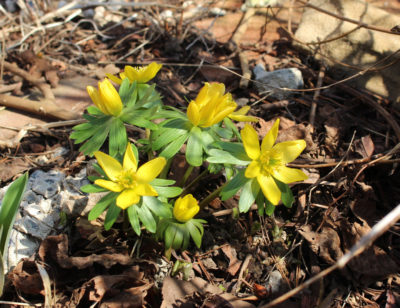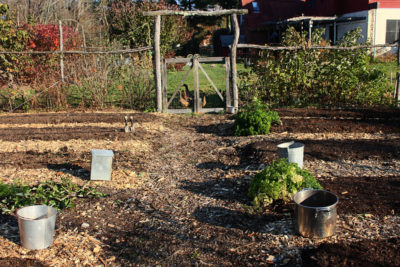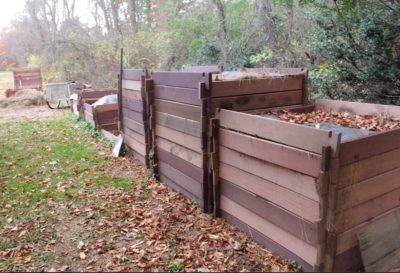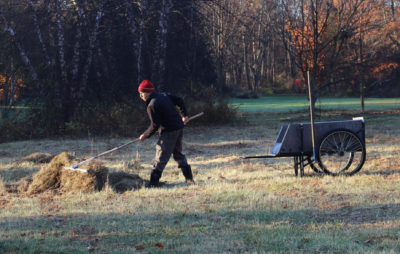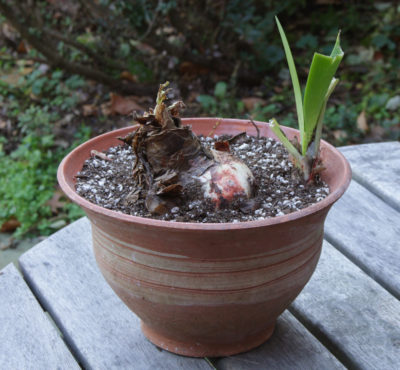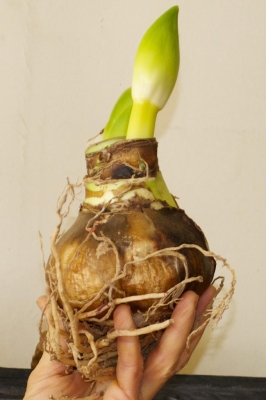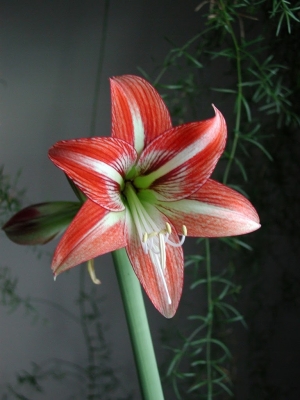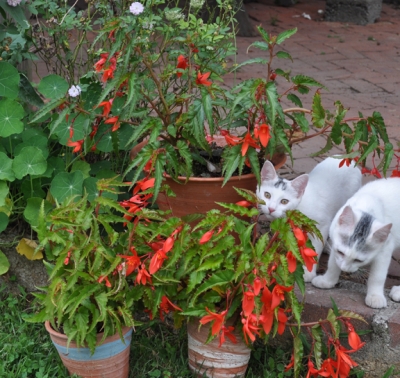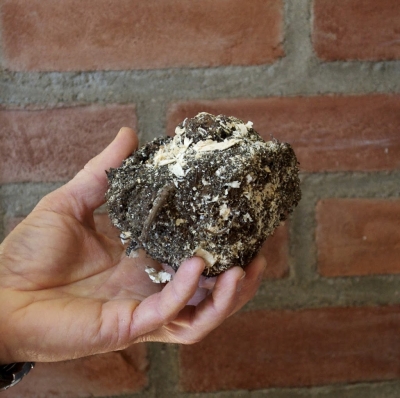IT’S SPRING! INDOORS, AT LEAST
A Big, Fat, Red Flower; Perfect For Now
One spring day many years ago, my friend Bill looked out upon the daffodils blooming and other stirrings, and summed up the scene with the statement that “It’s spring and everything is wigglin’.” We haven’t yet come that far along, but things are wigglin’ — indoors. (Little did I know that 2 days after writing this, all would be buried under two feet of snow!)
Most dramatic among the wigglins is the big, fat flower bud pushing up from the big, fat amaryllis bulb. True, the goal of most people is to have the flamboyant, red blossoms open for Christmas, which requires beginning a bulb’s dormant period in the middle of August. It’s cool temperatures, around 55°F., and dry soil that puts an amaryllis bulb to sleep. Then, in early November, warm temperatures and just a little water wakens the bulb out of its slumber, with increasing watering, commensurate with its growth, bringing the bulb fully awake and ready to burst forth in bloom 6 weeks later.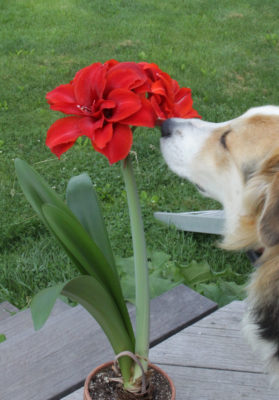
In mid-August, I’m more focussed on harvesting tomatoes and peppers, readying endive for October harvests, making compost, and other garden goings-on than on the amaryllis bulb that I tipped out of its pot and planted in the ground in late spring. And anyway, a few red flowers, even flamboyant ones, do little to counteract December’s grayness.
So I let my amaryllis flower in its time, which should be within a couple of weeks or so, and add to the indoor late winter wrigglin.
Citruses Come Awake
Much more exciting are the less dramatic signs of growth on some of my potted subtropical trees.
As subtropical plants, citrus trees push out multiple flushes of growth through the year. The first flush is about to begin on Meyer lemon, Golden Nugget mandarin, and Meiwa kumquat.
One or more of those citrus flushes also bears flowers, which lead to fruits. The kumquat typically flowers late. My Golden Nugget mandarin hasn’t yet ever flowered for me, so I’m not sure when to expect those blossoms. Wait! Do I see the tiny beginnings of a flower bud on that nascent stem?
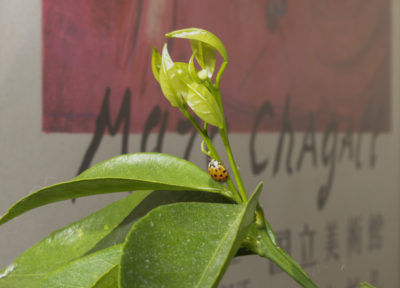
Golden Nugget awakening
Meyer lemon is notorious for its free flowering. Looking closely, I see that some of the new growth includes flower buds. At the same time, I see that the lemon fruits that had their beginnings last year are now swelling more rapidly. I’m predicting to have new lemons forming even as I am harvesting ripe ones.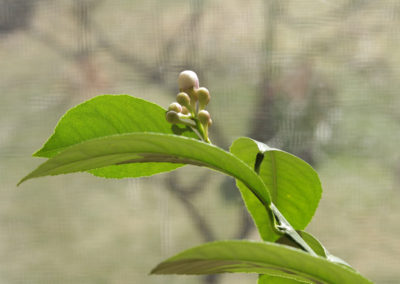
Fresh-picked Avocados, in New York?
Most exciting are the fat buds expanding on my potted avocado tree, grown from a seed I planted a couple of years ago. I grafted this seedling with a stem of the Marcus Pumpkin variety of avocado that I got about this time last year from a friend in Florida.
An avocado tree grown from seed would take many years — if ever, as a houseplant this far north — to reach maturity, that is, to be old enough to be able to flower and fruit. A stem taken from a fruiting plant is already mature, though, and remains so even if grafted on a young seedling. The grafted stem of Marcus Pumpkin on my avocado tree is, in fact, about to burst into bloom.
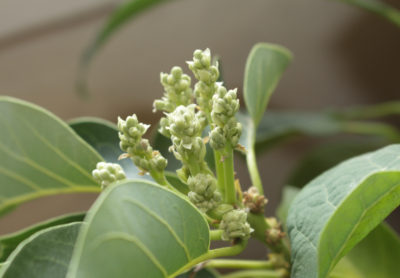
Avocado flower buds
Much can happen ‘twixt the bloom and the mouth; I’m guardedly hopeful to be guacamole-ing freshly plucked avocados in a few months. The problem is synchronous dichogamy, which may end up being more of a mouthful than my avocado fruit. The upshot of this mouthful is that each of an avocado plant’s gazillion flowers stays open for 2 days. When the flower first opens it is in the female phase, receptive to pollen; this phase lasts 2 to 4 hours. Day 2 has the flower in its male phase, shedding pollen. The male and female flower parts being out of synch is good for avocado evolution but bad for me as far as home-grown gucamole.
Depending on the variety, avocado flowers might be Type A or Type B. Type A flowers are not ambitious, competitive, or impatient like Type A humans. Or maybe they are, because the female parts are open and receptive only in the morning of the first day; these same flowers open as males in the afternoon of the second day. Type B flowers aren’t ready for action until the afternoon of their first day; then they open a males the next morning.
The upshot of all this is that it’s best to have two different avocado varieties, a Type A and a Type B. The morning phase of Type B, as males, can pollinate the morning phase of Type A, which are females. And vice versa.
Marcus Pumpkin is a Type B avocado. When I grafted it, I also grafted Lula, a Type A avocado, on another seedling. Although Lula failed to take, all may not be lost. My plan is to dab the Marcus Pumpkin flowers in the afternoon with an artist’s brush, tap the pollen into a petri dish, cover it, and the next morning dab the brush from the collected pollen to the Marcus Pumpkin flowers in their female phase.
Perhaps I’ll be harvesting fresh avocados in a few months. Perhaps I’ll be just buying fresh avocados in a few months. At any rate, as a northern gardener, it’s very exciting to have my avocado tree about to flower.
And Even Hints Of Spring Outdoors
All is not so quiescent outside. After a couple of warm days, I see that winter aconites have spread their cheery, yellow petals. (But not for long.)